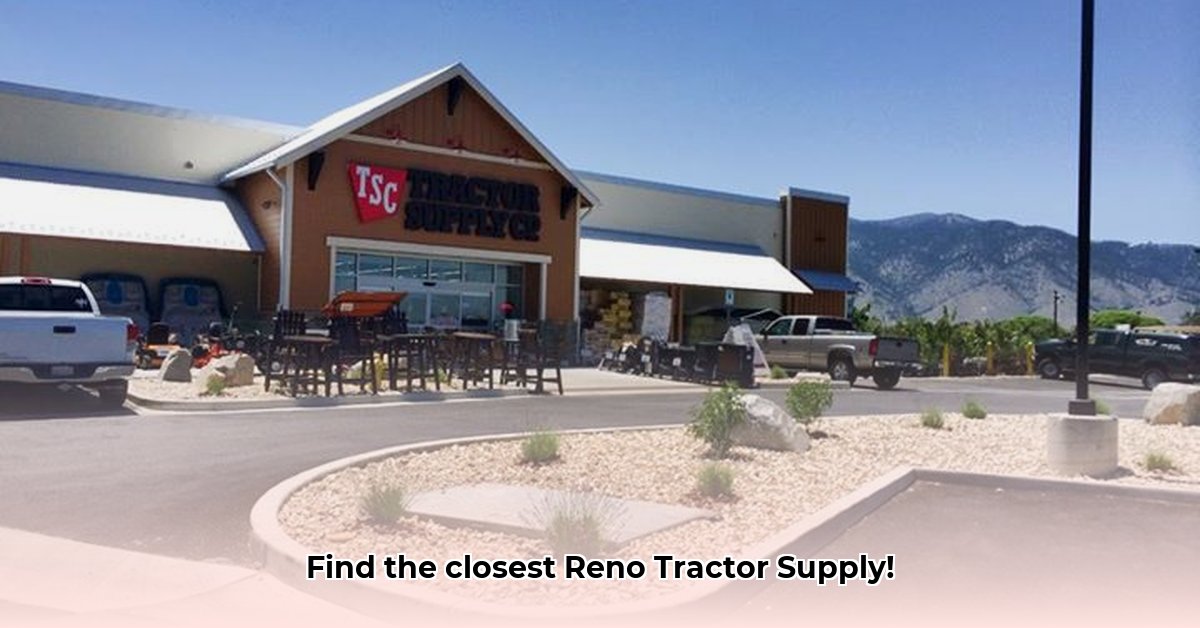
Reno Tractor Supply Store Locator: A Usability Analysis
Finding the nearest Reno Tractor Supply store shouldn't be a chore. This article analyzes Reno Tractor Supply's store locator functionality, identifies areas for improvement, and provides actionable recommendations for developers, marketers, and management. We also briefly compare its features to those of Cal Ranch to highlight best practices in retail store locator design. For a similar example, check out this Lufkin Tractor Supply page.
Understanding Reno Tractor Supply's Current Locator
Reno Tractor Supply's current store locator allows users to find nearby stores using basic search parameters. However, the level of detail provided is limited. While users can locate stores using zip codes or addresses, crucial information such as store-specific services, in-stock items, or direct phone numbers are often missing. This lack of detail can hinder the customer's ability to plan their visit effectively. Doesn't this lack of information potentially impact purchasing decisions?
Comparative Analysis: Reno Tractor Supply vs. Cal Ranch
A comparison with Cal Ranch reveals differing approaches to store locator design. Cal Ranch opts for a simpler, more streamlined approach, focusing primarily on location-based search. While straightforward, this simplicity may limit the depth of information provided. Reno Tractor Supply, on the other hand, could benefit from simplifying its interface while adding more detailed information to enhance the user experience. The optimal solution would likely strike a balance between simplicity and comprehensiveness.
Actionable Recommendations for Improvement
Reno Tractor Supply can significantly enhance its store locator functionality by implementing the following recommendations:
For Developers:
- Implement Comprehensive Usability Testing: Conduct thorough usability testing with a diverse group of users to identify pain points and areas for improvement in the locator's design and functionality. A well-designed test plan will identify clear steps toward improvement.
- Enhance Mapping Capabilities: Upgrade the mapping system to include advanced features like street view, 3D building models, and interactive elements. This will significantly improve the visual appeal and usability of the locator.
- Expand Search Options: Allow users to search using various parameters—address, zip code, city, and even nearby landmarks. This increased flexibility will cater to diverse search preferences and improve locator accessibility.
For the Marketing Team:
- Employ A/B Testing Strategies: Conduct A/B testing (comparing two versions of a page to see which performs better) to optimize the locator's design and functionality. This data-driven approach helps ensure that design choices maximize user engagement and conversion rates.
- Implement Robust Analytics Tracking: Monitor user behavior on the locator to pinpoint areas needing improvement. Detailed analysis of user interactions provides valuable insights for iterative design improvements.
- Integrate with CRM Systems: Integrate the locator with the CRM system to facilitate personalized recommendations and targeted marketing based on user location and purchase history. This will help personalize the user experience.
For Business Management:
- Prioritize Customer Feedback: Actively solicit and analyze customer feedback on the locator's usability via surveys, feedback forms, and social media monitoring. Customer insights are invaluable for identifying areas that need improvement.
- Closely Monitor Website Analytics: Track website traffic and usage patterns related to the store locator. This data will reveal peak usage times and popular search terms, aiding resource allocation and performance optimization.
- Explore Strategic Partnerships: Explore partnerships with popular navigation apps (such as Google Maps or Apple Maps) to increase the locator's visibility and accessibility. Increased visibility boosts engagement.
The Importance of a User-Friendly Store Locator
A well-designed store locator plays a crucial role in driving in-store traffic and sales. By prioritizing user experience and implementing the above recommendations, Reno Tractor Supply can optimize its store locator to become a powerful tool, attracting and engaging customers. Investing in locator optimization is a strategic investment in enhancing customer satisfaction and driving business growth. Remember, a simple, effective store locator significantly impacts the overall customer journey and ultimately, bottom-line results. Does your current locator make it easy for customers to find what they need?